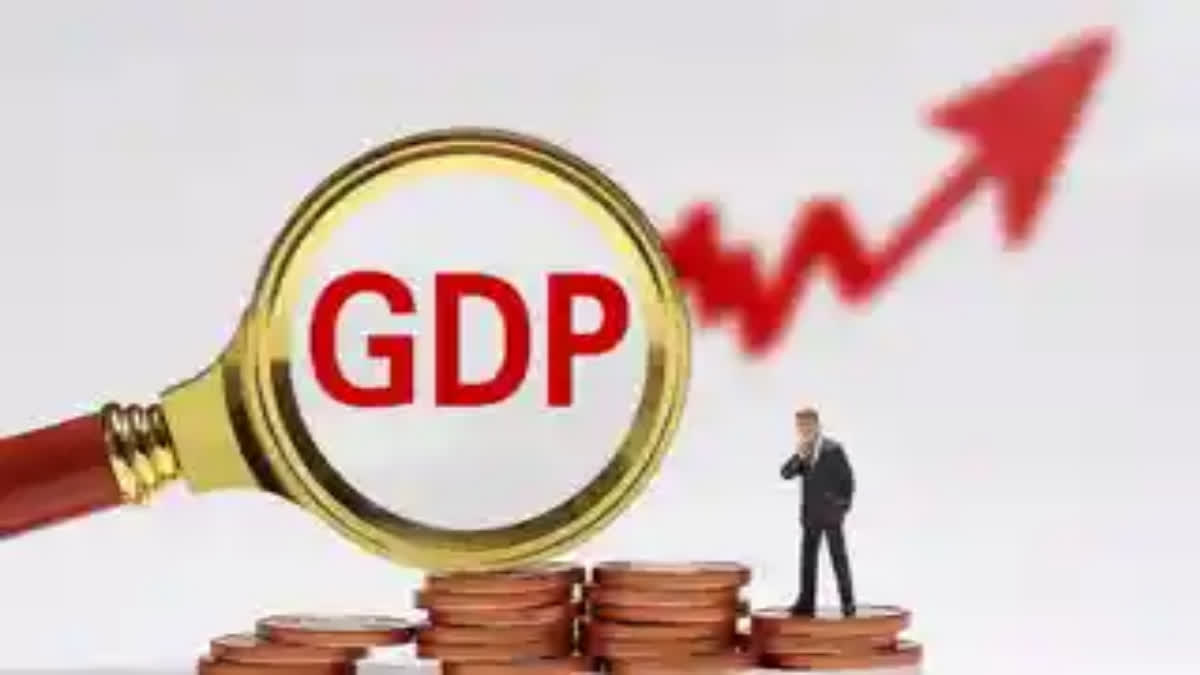Hyderabad: India’s Gross Domestic Production (GDP) growth rate is expected to decline to 6.5 percent in the next financial year, from a high of 7.3 percent growth rate which it is set to achieve in the current financial year ending in March this year. Though there are favourable conditions that will help the country retain the tag of the fastest growing major economy in the world, there are several other factors that will slow down the rapid growth likely to be recorded this year. While a sustained capital expenditure by the Government, healthy corporate performance, prospects of an increase in private capital expenditure and soft global commodity prices are helping Indian economy to maintain the momentum, other factors such as weak exports and a rise in wholesale price index (WPI) is expected to contribute to moderation in the GDP growth rate.
According to calculations done by India Ratings and Research, a Fitch Group rating agency, India’s GDP is expected to grow at 6.5 percent in the next financial year which is starting from April 1 this year and ends on March 31, 2025.
For the current financial year, which started in April last year and ending in March this year, India’s GDP is expected to perform slightly better as the growth rate has been estimated to be 7.3 percent.
“Despite the base effect, the sequential GDP growth indicates that the economic recovery is on track due to the sustained government capex, healthy corporate performance, deleveraged corporate and banking sector balance sheets, continued softness in global commodity prices, and prospect of a new private corporate capex cycle,” India Ratings said in a statement sent to ETV Bharat.
However, the rating agency also warned about the risks to the economy as aggregate demand is largely driven by government capital expenditure.
“Prevailing consumption demand is still skewed in favour of the goods and services consumed by the households belonging to the upper 50 percent of the income bracket,” it said.
As a result, the consumer durables segment of Index of Industrial Production (IIP) grew at just 1 percent during September last year (December 2023).
As India’s high economic growth is largely driven by the spill-over effect of increased government capital expenditure, it is mostly visible in industrial segments namely capital and infrastructure, and construction goods, which during the 9th month of the current financial year registered a growth rate of 7 percent and 10.4 percent respectively.
Weak exports to weigh down on GDP growth
One of the major risks to India’s economic growth in the next financial year is a weakening export sector which is expected to be hit by the growth slowdown in advanced economies and rising trade distortions and geopolitical fragmentation.
As a result, exports are likely to face global headwinds even in FY 2024-25. India’s goods and services exports have already recorded a negative growth rate of 0.14 percent in January (10th month of the current fiscal).
Increased wholesale prices to bring down GDP growth rate
According to the economists at the raging agency, another issue that will have implications for gross value added (GVA) and corporate profitability in the next financial year is the rise in Wholesale Price Index (WPI) inflation which is similar to producers’ price index (PPI) in some other economies.
In India, real GDP growth rate is calculated by adjusting the wholesale price index (WPI) from the nominal GDP growth rate. It means, an increase in WPI will bring down the real GDP growth rate due to adjustment.
For example, WPI after remaining in the negative zone between April to October 2023 has turned into inflation since November 2023.
Sunil Kumar Sinha, Principal Economist of India Ratings and Research said that a rise in input cost, if not adequately passed into output prices, will reduce value addition and corporate margin.
“Given that consumption is not broad-based, producers will find it difficult to pass on the higher input cost to output prices,” observed the economist.
Broad-basing of consumption demand taking more time than expected
According to the rating agency, Private Final Consumption Expenditure (PFCE), which accounts for about 60 percent of the GDP from the demand side, is likely to grow 6.1 percent in the next financial year on the year-on-year basis.
PFCE y-o-y growth rate has been even weaker in the current financial year as it is likely to grow by just 4.4 percent this year.
The agency’s calculation shows that, in general, a one percentage point increase in real wages could lead to a 1.12 percent increase in the real PFCE and the multiplier effect of this could result in a 64 basis points increase in the GDP growth.
However, wage growth has been muted over the past several years. In fact, the average real wage growth during FY21-FY22 was only 3.1 percent and the corresponding PFCE growth was 3 percent.
“Since consumption demand is skewed in favour of the goods and services consumed largely by the households belonging to the upper income bracket, such consumption demand is not sustainable,” said the agency.
In other words, India needs to improve wage growth rate (salary and wages paid to the working population), to achieve broad-basing of private consumption, which at present is limited to high income groups, to sustain momentum in its economic growth.
Read More



